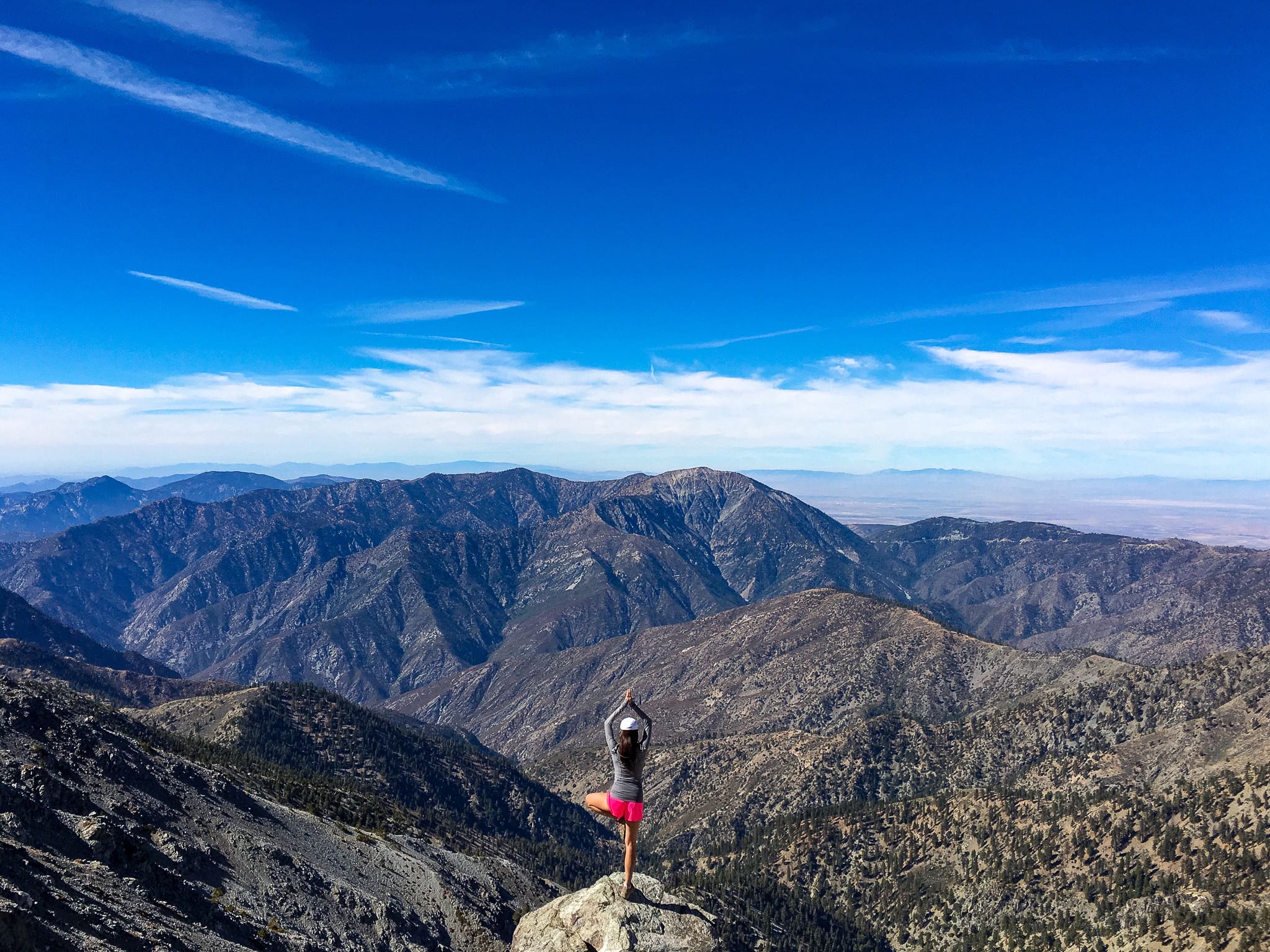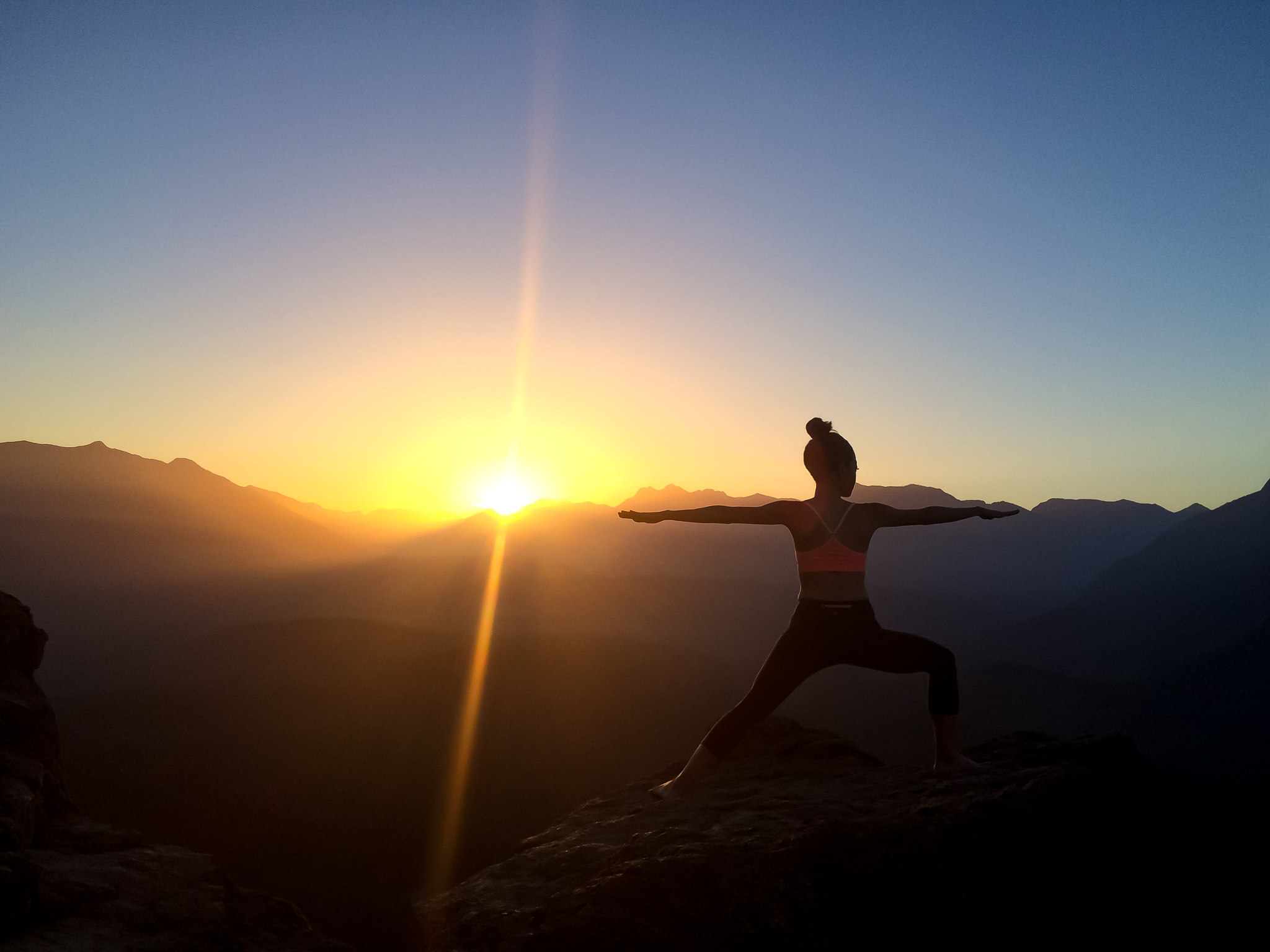From the Yoga Mat to the Mountains

A lot of people have misconceptions about yoga where some believe it merely involves stretching exercises or that it is meant for spiritual “woo-woo” people. Truth of the matter is, yoga has far more benefits than just increasing one’s flexibility & helping to find inner peace. Personally, regular practice has helped me build on my core & cardiovascular strength as well as creating a deeper body awareness. Yoga has taught me how to listen to my body & recognize when I can push myself further or to bring my intensity down a notch. Through my practice, along with hiking, I have also been able to achieve a higher consciousness by bringing myself back to the present moment at any time.
Please note: This post contains affiliate links.
This means that, at no extra cost to you, I may receive a small commission if you make a purchase through my affiliate link.
You may read my full disclosure policy here.
Achieve a Natural High With Outdoor Yoga
I enjoy incorporating yoga into my mindful morning ritual to set a positive tone for the rest of my day. My personalized yoga practice has changed my life for the better in many aspects. But to integrate its benefits & principles into hiking takes the term “natural high” to a whole new level! Here I discuss five essential yoga fundamentals that help bring to light the deeper connection between the mat & the mountains.
“With each inhale, lift your heart closer to the sun. With each exhale, root your heels more deeply in the ground.”
Unknown
1) Breath.
At the time when my yoga practice was progressing, hiking was also becoming an addiction. I found myself seeking the trails at least twice a week, even on the rainiest Washington days! At first I didn’t give yoga any credit for building the strength & endurance to trek on. That was until I found myself meditating through pranayama breaths to stay centered on the trail. During my hikes, I would slip into a peaceful mindset, zoning out my surroundings except for the sounds of chirping birds & the crunching leaves under my feet. My heavy yet steady breaths would sync with the rhythm of my footsteps, very much like the movements of my yoga flow. It was this renewed focus on my breathing that allowed me to discover a “natural high.”

2) Foundation.
I can attest that a regular yoga practice can help enhance your physical strength & complement any outdoor activity. Many poses start from a standing position with focus centered on your bare feet. This opens a new appreciation for the connection between you & the earth. Foundational poses can provide extra stability in your ankles to prevent accidental sprains & overall durability for those extended miles on the trail.
Appropriately named, the first yoga pose I go into once I reach a summit is the Mountain Pose (Tadasana). It is one that allows you to feel the foundation of your own feet (credits to Yoga Journal):
- Stand with your big toes touching. Spread your toes wide & root down through all four corners of your feet
- Engage your thighs & lift your kneecaps, drawing energy in towards the centerline of your body
- Lengthen your spine & tailbone into the ground
- Broaden your collarbones & shrug your shoulders up to your ears, then back down again
- Relax your arms & let them hang naturally by your sides with your palms facing forwards
- Keep your chin in a neutral position, soften your face, & stand tall taking in 5-10 deep breaths
3) Core.
Your core muscles hold your upper body upright to work against gravity & connects down to your hips & legs as you ascend the trail. In yoga, “core locks” are static muscle contractions that anchor you into your stability, stimulate heat, & draw energy to the center of the body. Uddiyana bandha, or “upward-lifting lock,” is practiced through deep inhalations & by drawing your navel in towards your spine to engage your core. This creates a state of weightlessness, making you feel lighter & more limber. Mastering this practice helps to easily activate your core muscles as needed on the trail.

4) Centerline.
Imagine that your body has a line running straight down from your head to your toes. This centerline keeps you balanced when you walk & also adjusts your body to recenter itself when additional weight is placed on it. During yoga practice, the body re-calibrates based on the shape & intensity of each pose. The same idea can be applied when hiking through various terrains of dirt, rock, & undergrowth that may throw you off balance. I can confirm that practicing one-legged balancing poses has conditioned me to walk safely across fallen logs & tread on slippery rocks in a rushing river.
5) Gaze.
Yoga relies on concentration & drishti, or a focused gaze, to maintain a pose. Allow your gaze to be soft so that it is easy to release any stress & anxiety that may have built up inside you. Resetting your gaze during the course of the day acts as a reminder to stay in the present. Today’s technology-driven society creates so much distraction in our lives that sometimes it is very difficult to remain unplugged. Whether you are practicing yoga, hiking, or even spending quality time with loved ones, switch your phone to silent mode. Be more mindful & attentive by redirecting your gaze towards what is most important in that current moment.
Integrating yogic principles into hiking has created a reciprocal effect such that I would feel the same sense of grounding & serenity on the yoga mat as I would on top of a mountain. Yoga can help you become more agile, aligned, & in tune with your body when you hike. Asanas require holding poses for prolonged periods & builds endurance. This in turn can allow you to cover longer distances on the trail without feeling as exhausted. On the flip side, hiking can increase lung capacity & provide overall fitness which can then support your yoga practice. It’s a win-win situation!

Please note: The information presented here is not intended to treat, diagnose, or prevent any health issues.
Please consult with your physician regarding specific conditions & before beginning any diet or health related regimens.


Mary Ann High
July 16, 2018 at 11:41 amGreat blog, Angella. Very inspiring💕. Will follow your blog. Keep up the excellent work!
Angella Shin
July 16, 2018 at 4:57 pmThanks Mary Ann for stopping by & for your feedback! I hope all is well up there…doing a lot of yoga in the mountains lately? 😉